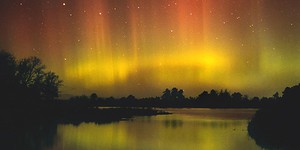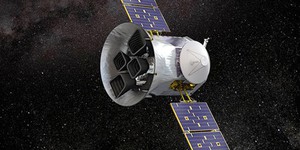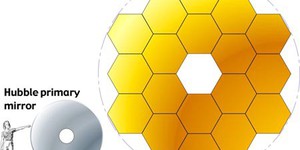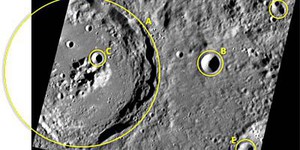Astronomy Science Projects (44 results)
Astronomy is science that will challenge your imagination. How many stars in a galaxy? How many galaxies in the known universe? How many strange worlds are out there on other planets, orbiting other stars, and what are they like? Is there life on planets besides Earth? The distances are mind-boggling; the numbers are immense.
|
Select a resource
Sort by
|
Sunspot activity has been monitored continuously since about 1700. The historical data shows that sunspot activity rises and falls in a roughly 11-year cycle. This project shows you how you can use both graphical and statistical analysis to look for patterns in cyclical data.
Read more
Featured
Have you heard that garlic powder is supposed to inhibit the growth of bacteria? Which do you think would make a better disinfectant: a solution of garlic powder or a solution of bleach? This project shows you a straightforward way to compare the effectiveness of different disinfectants (or other antimicrobial agents), by measuring zones of inhibition on a culture plate.
Read more
Scientists have known for hundreds of years that sunspot activity waxes and wanes over a cycle that lasts approximately 11 years. In the 1970's, scientists discovered that the sun periodically blasts electrified gases into space, in huge outbursts called 'coronal mass ejections,' or CMEs. This project asks the question: do CMEs follow the solar sunspot cycle?
Read more
The Transiting Exoplanet Survey Satellite (TESS) is a space telescope for NASA's Explorers program, designed to search for exoplanets using the transit method in an area 400 times larger than that covered by the Kepler mission. It was launched on April 18, 2018 atop a Falcon 9 rocket. During its two-year primary mission, it was expected to find more than 20,000 transiting exoplanets, compared to about 3,800 exoplanets known when it launched. The first light image from TESS was taken on August…
Read more
Can you imagine designing and building a space telescope the size of a tennis court? Believe it or not, that is someone's job! Hundreds of engineers were involved in getting the James Webb Space Telescope (JWST) into space. This telescope has the potential to enable astronomers to see light from when the Universe was first formed. No one knows what amazing discoveries this might lead to, but already, JWST has delivered astounding deep space images that offer an unprecedented look at…
Read more
Have you ever wanted to analyze data from a NASA spacecraft? In this science project you will use data from NASA's MESSENGER mission to measure the diameter and calculate the depth of impact craters on Mercury. You will then analyze that data for relationships between a crater's depth and diameter. This is your chance to
perform a science project as a NASA researcher would!
Read more
The sun sometimes releases huge bursts of electrified gases into space. These bursts are called coronal mass ejections (or CMEs). When CMEs are directed towards Earth they can generate auroras, the spectacular atmospheric displays also known as "northern lights" (photo by Chris VenHaus, 2001). In this project you'll use images from the SOHO satellite to measure how fast CMEs move.
Read more
Let's suppose you can take advantage of the Internet and get a 'pen pal' located a 1000 miles away in another city. On the same night, and at EXACTLY the same time 'Universal Time', make a CAREFUL observation of where the Moon is located with respect to the background stars. You should be able to discern a slight (about 1/2 the Moon's diameter) shift in position due to parallax. Then, with a little geometry, you could estimate the distance of the Moon during the full lunar cycle (Odenwald,…
Read more
Here's an astronomy project idea from Dr. James Pierce, a professor in the Astronomy Program at Minnesota State University, Mankato: "Determine the length of twilight at different times of the year by observing the time at which certain bright stars first appear and comparing with the sunset time. Beware of variations due to stars appearing at different altitudes. Try using Polaris as a standard. Also note the time at which automatic streetlights turn on. Determine how soon after sunset stars…
Read more
Get good photographs of the Moon showing lots of craters and count how many craters you find in a range of diameter classes. One useful source is the Consolidated Lunar Atlas (Kuiper et al, 2006). Make a histogram that shows the distribution of diameters. Most of these craters were formed during the first billion years of the Moon's formation, but you should confirm that this is true for the the Moon areas you've selected in your photographs by doing background research. Is cratering uniform…
Read more
Globular clusters, compact groups of about a million stars that move around together in galaxies, are among the oldest objects found in the universe. Since they are found in most galaxies and since they've been around for so long, globular clusters have a lot to tell us about what the universe looks like now and how it got that way. Is our Milky Way Galaxy just like all the other galaxies out there? What are galaxies made of? What can we learn about the universe from looking at galaxies? …
Read more
|
Explore Our Science Videos
Draw with a Pantograph - STEM Activity
Build A Vortex Cannon!
What Do Enzymes in Pineapple Juice Do to Milk?











